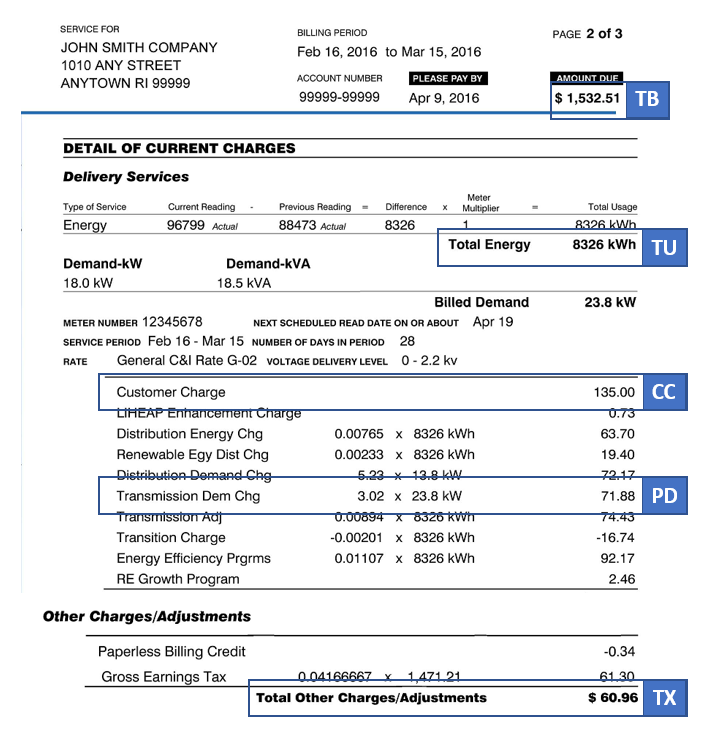Calculating the Avoided Cost of a Solar Project
An important factor in determining the viability of a solar project is the potential saving in electricity, the “avoided cost.” By generating your own electricity with solar, your utility avoids the cost of having to generate that electricity, which reduces your electricity bill.
Using an electric bill and the step-by-step formula below, you can easily figure out how much you’ll save by going solar.

While the formula for calculating the avoided cost may look complicated, we’ll break it down into just three steps. To get started, find the following line items on your bill:
- Total kWh for a given month (TU)
- Total bill amount (TB)
- Customer charge (CC) – The customer charge is the standard service fee that the utility bills you for connecting to their network.
- Taxes (TX) – Your electric bill will include standard state and local taxes as well as a gross receipts tax.
- Peak or demand charges (PD)

To calculate your avoided rate, follow these three steps:
- Calculate PD1 by multiplying PD * 0.35
- Calculate TB1 adding PD1 + CC + TX and subtracting this total from TB
- Calculate your avoided rate by dividing TB1 / TU
Using values from the sample bill above, we can calculate the avoided rate:
- PD1 = 71.88 * 0.35 = 25.16
- TB1 = 1,532.51 – 25.16 – 135.00 – 60.96 = 1,311.39
- $1,311.39 / 8326 = $0.16
The avoided rate is $0.16 per kWh.
To make sure a solar project will save your organizations money, compare the levelized cost of solar energy (LCOE) to your avoided rate. The LCOE is the lifetime cost per kWh of solar energy. You should ask your solar developer or installer to give you the LCOE of their proposed solar array.
Download this blog as a flyer.
For businesses of all sizes, solar energy can be a great way to reduce operating costs and increase the bottom line. At BAI, we work with businesses to develop solar projects that have an attractive ROI while delivering long-term cost savings. Contact us today.